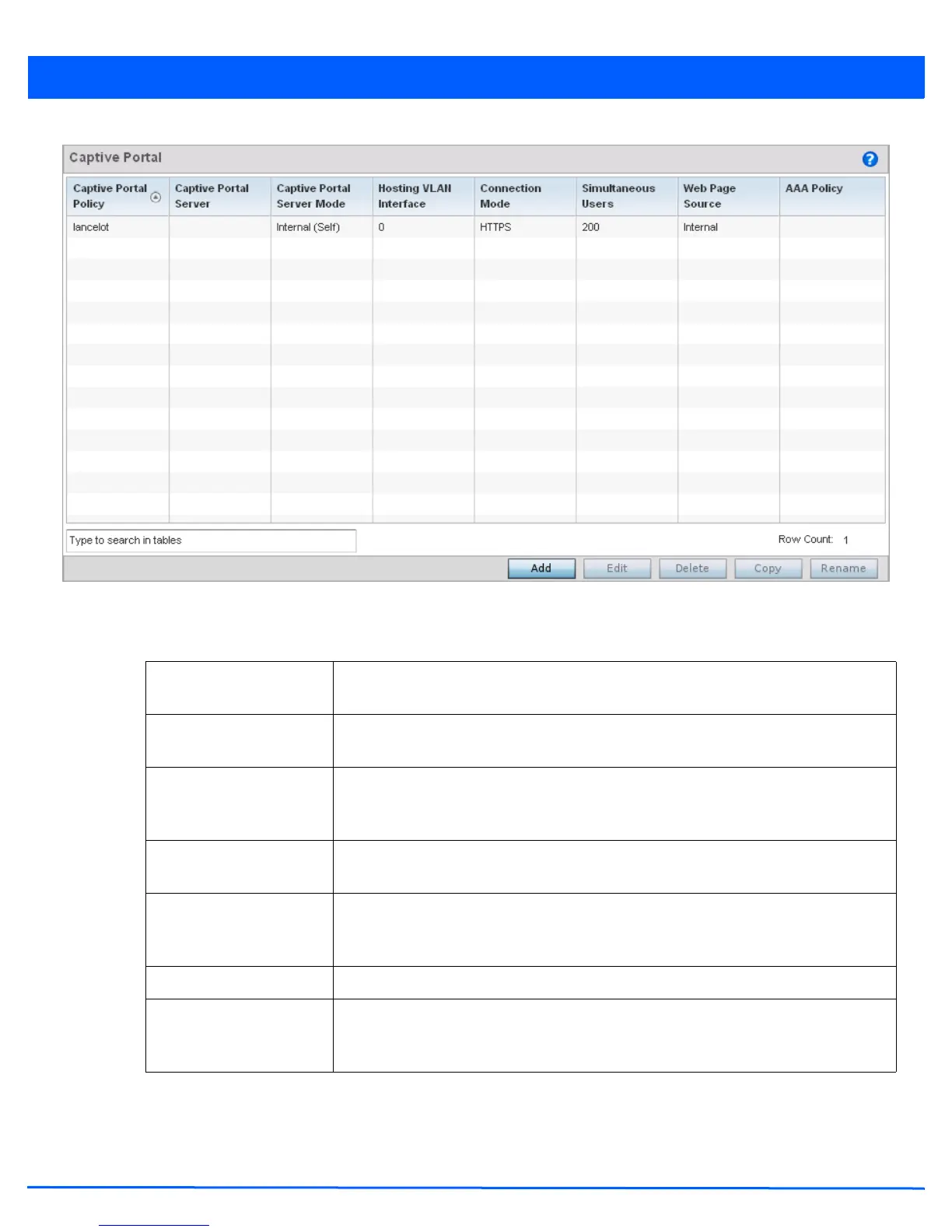Services Configuration 9 - 3
Figure 9-1 Captive Portal screen
4. Refer to the following captive portal policy configurations to determine whether a new policy requires creation, or an
existing policy requires edit or deletion:
Captive Portal Policy Displays the name assigned to the captive portal guest access policy when it was initially
created. A policy name cannot be modified as part of the edit process.
Captive Portal Server Lists the IP address (or DNS hostname) of the external (centralized) server validating guest
user permissions for the listed captive portal policy.
Captive Portal Server
Mode
Lists each hosting mode as either Internal (Self) or External (centralized). If the mode is
Internal (Self), the access point maintains the captive portal internally, while External
(centralized) means the captive portal is being supported on an external server.
Hosting VLAN Interface When Centralized Server is selected as the Captive Portal Server Mode, a VLAN is defined
where the client can reach the controller. 0 is the default value.
Connection Mode Lists each policy’s connection mode as either HTTP or HTTPS. Motorola Solutions
recommends the use of HTTPS, as it offers client transmissions a measure of data
protection HTTP cannot provide.
Simultaneous Users Displays the number of users permitted at one time for each listed policy.
Web Page Source Displays whether the captive portal HTML pages are maintained Internally, Externally (on
an external system you define) or are Advanced pages maintained and customized by the
network administrator. Internal is the default setting.

